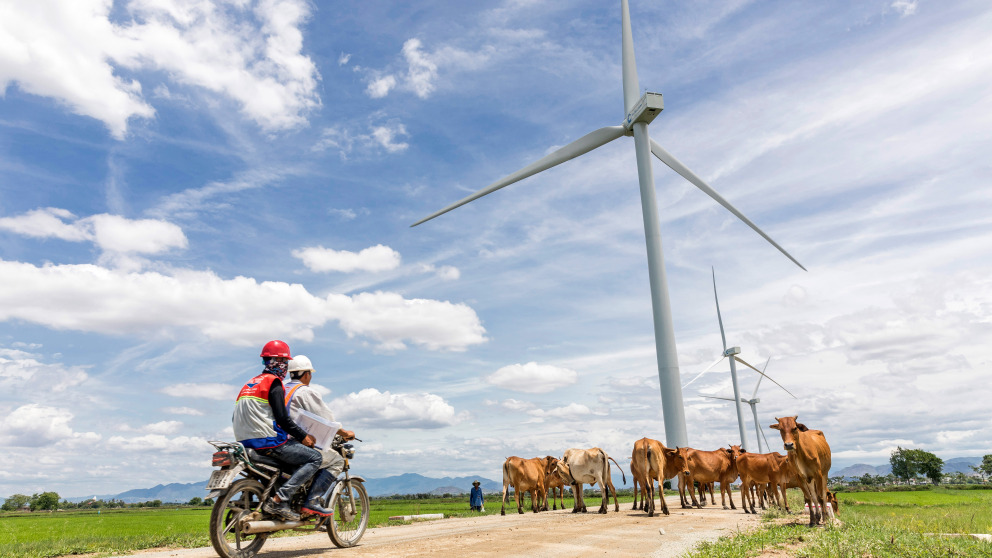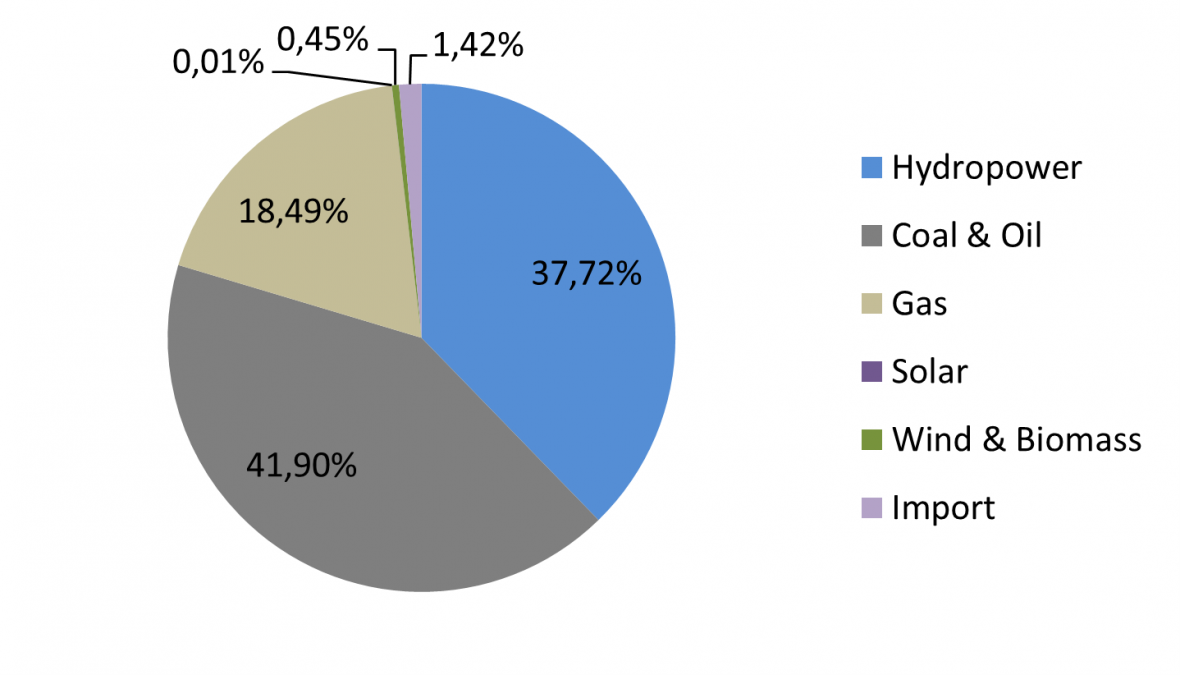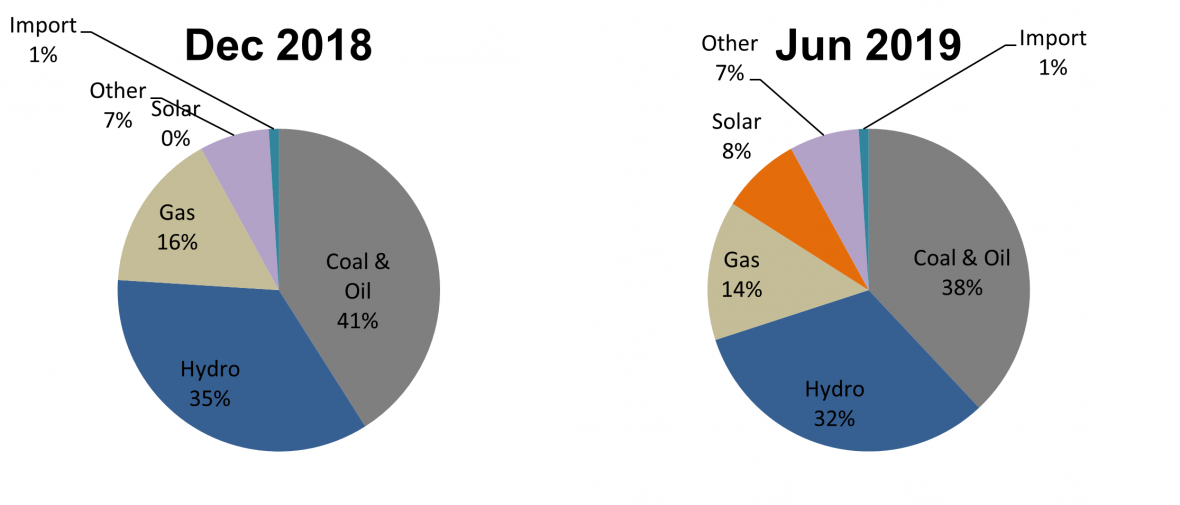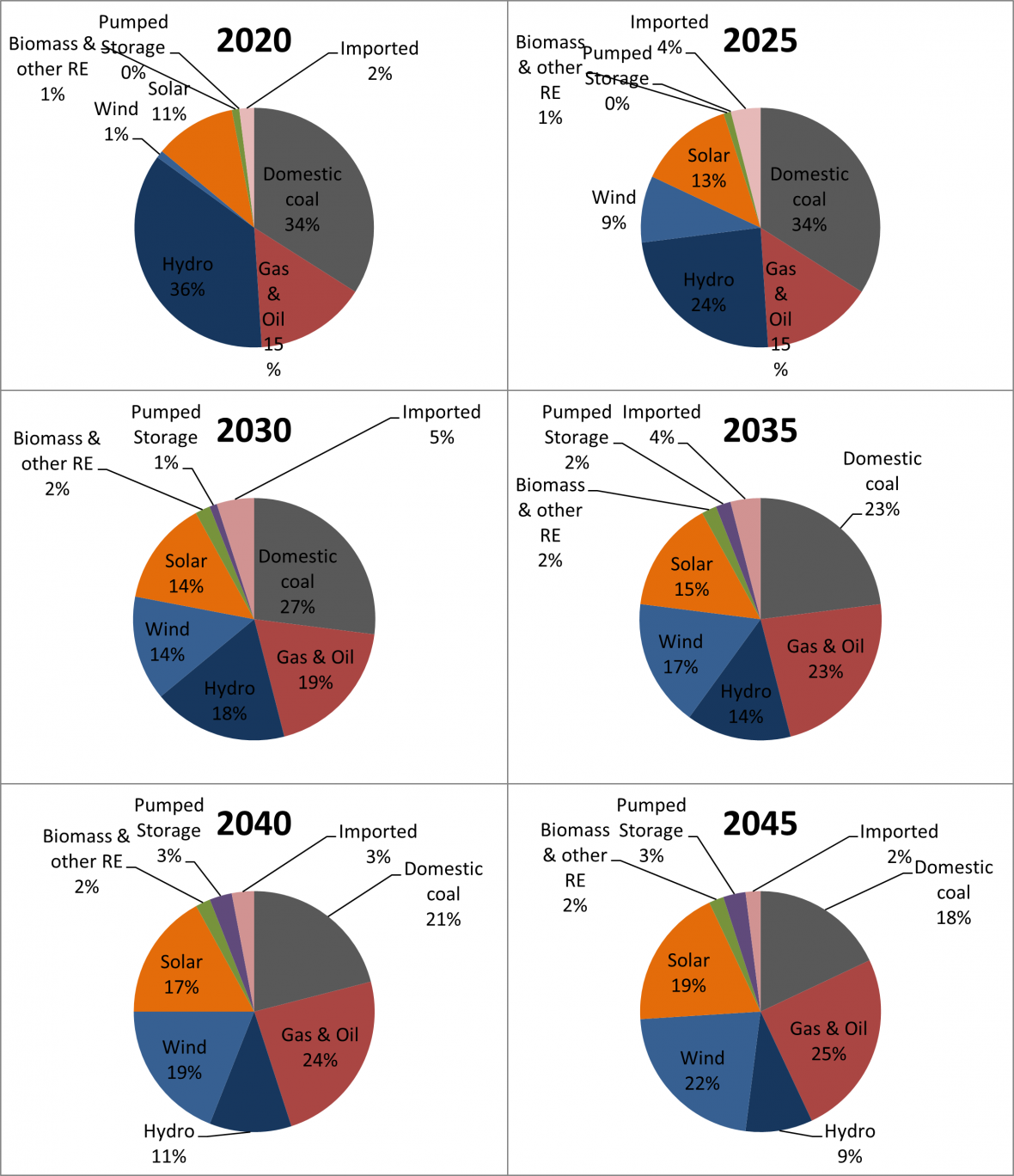Is Mitsubishi’s withdrawal from the Vinh Tan coal power plant a signal for Vietnam’s energy transition?
13.04.2021

In late February 2021, Japanese trading company Mitsubishi Corporation decided to pull out of the Vinh Tan 3 coal-fired power plant project in Vietnam after facing considerable pressure from investors and activists over the company’s fossil fuel investments. This decision follows in the footsteps of HSBC’s withdrawal one year previously. Scheduled to go on-grid in 2024, the 2-gigawatt plant was expected to feature ultra-supercritical technology. This is the first time that Mitsubishi has pulled out of a coal development project. Work on Vinh Tan 3 will now continue under the aegis of China Southern Power Grid, which is also a major investor in the Vinh Tan 1 power plant. However, this outcome will not serve the interests of Vietnam in terms of job creation, air quality, and achieving climate targets.
Fossil fuels dominate Vietnam’s power mix despite country’s high renewables potential
The Vietnamese power sector is still dominated by fossil fuels, with coal and oil accounting for 41.90% of the power generation mix, and gas making up 18.49% (EVN, 2018). Due to limited coal and gas resources, Vietnam’s fossil fuel imports are set to increase over the next decades. Except for hydro power, which accounts for 37.72% (2018) of the mix, renewable energy sources play only a marginal role. In 2018, wind power, solar and biomass accounted for less than 1% despite recent increases in installed capacity.

According to the 2019 Energy Outlook Report, Vietnam has great potential for renewable energy projects, including hydro, solar, wind, biomass, and waste (EREA & DEA, 2019). The technical potential for the development of wind and solar power in Vietnam has been estimated to be over 650 GW aggregate, specifically up to 380 GW for solar, around 217 GW for onshore wind and up to 76 GW for offshore wind (EREA & DEA, 2019). With hydropower potentials (medium and large scale) now almost fully exploited, wind and solar power have emerged as the renewable sources with high future potential for development. While only a small amount of solar and wind capacity was in operation pre-2018, strong gains were made in 2019, with 4.50 GW of solar and 0.45 GW of wind over the first six months (see figure 2).

However, according to the Power Development Plan VIII (PDP8), which was subject to public consultation in February and March 2021, the expected share of renewable energies does not reflect global trends in renewables development, nor does it reflect the high potential deployment of those greener sources. Specifically, this important national plan would deliver only a slight and gradual decrease in coal-fired power plants and a moderate increase in renewable energies over this period in terms of generation capacity. However, in the decade 2020-2030, fossil-based power plants continue to be prioritized, with around 17 GW of newly installed coal-fired capacity. Over the period 2020-2045 this figure is expected to reach 29.4 GW. Coal-fired capacity will account for 34% of the energy mix in 2025, 27% in 2030, and 23% in 2035; meanwhile, wind and solar will account for 28% by 2030, 36% by 2035 and 41% by 2045 (MOIT, 2021).

Vietnam’s Updated Nationally Determined Contribution (NDC) 2020, which was submitted to the UNFCCC last September, revealed a slight increase in its relative emissions reduction target for 2030 from 8% to 9%; this increase represents only a minor improvement in absolute terms (Nguyen & Helgenberger, 2020). According to the NDC, super-critical thermal power technology will remain a priority, adding 2.4 GW, 10.8 GW, and 27.6 GW by 2020, 2025, and 2030, respectively. According to the draft Power Development Plan VIII, under the NDC scenario coal will account for around 36-37% of the electricity mix by 2030 and the carbon emissions will remain high post-2030. It is clear that the scenario based on the Updated NDC 2020 does not meet the targets defined by the National Strategy on Renewable Energy Development (MOIT, 2021).
Vietnam’s energy transition and carbon lock-in
The proposed Power Development Plan VIII (PDP8) tracks global energy trends to an extent and foresees the robust development of renewable capacities over the next decades. However, maintaining a high share of fossil fuel sources in the electricity mix over the next decades will set Vietnam apart from its peers. This will not only compromise global efforts to combat global warming; Vietnam risks losing out as investment flows increasingly target a future-oriented domestic industry base. Under the terms of the Paris Agreement, which Vietnam ratified in 2016 together with 190 parties to the UNFCCC, coal-fired power plants all over the world must be shuttered by 2040. The development of coal plants foreseen in the proposed plan would lock-in Vietnam’s power development until 2050 – and 2070 in some cases. Recent analysis from Climate Analytics shows that Vietnam’s planned massive coal expansion is totally inconsistent with the Paris Agreement and could lock Vietnam’s energy system into a carbon intensive path for decades, thwarting efforts to develop a secure and climate-resilient energy system (Climate Analytics, 2019).
The global energy transition is also impacting the prospects for coal power by undermining its appeal to international financial institutions. Mitsubishi’s decision to abandon Vinh Tan 3 due to public concern about its environmental and climate impacts reflects this trend. Despite claims that industry has turned the page with “clean coal”, coal power remains a key source of air pollutants; replacing coal with solar or wind will create positive impacts on people’s health as well as delivering co-benefits such as job creation, energy access, and energy security (IASS/UFU/GreenID, 2020). The significant increase in emissions anticipated under the Power Development Plan would have a serious impact on air quality in Vietnam, which already ranks among the worst in Southeast Asia.
A steady flow of innovations, coupled with plummeting costs, mean that renewables can often compete with even the cheapest coal. Utility scale technologies such as solar PV and wind power are outcompeting fossil-based technologies when it comes to costs. According to the International Energy Agency’s Energy Outlook Report 2019, solar PV is poised to become the largest component of global installed capacity and the expansion of renewable-based electricity generation from wind and solar PV will enable low-carbon sources to overtake coal in the power generation mix in the mid-2020s. By 2040, renewables are expected to provide more than half of total electricity generation with wind and solar PV emerging as the star performers (IEA, 2019). The IEA’s report also highlighted the role of offshore wind in opening up a huge renewable resource thanks to cost reductions and experience gained in Europe’s North Sea. Notwithstanding, the proposed share of renewable sources in the draft Power Plan is very modest and far from being transformational, with just 2 GW of solar power over the coming decade and no offshore wind in the period of 2021 – 2025. If the plan is adopted in its current form, Vietnam will miss its opportunity to become a regional pioneer in renewables as its high potential goes largely untapped.
Toward a more affordable, sustainable, and climate-resilient energy future
After Mitsubishi pulled out from the Vinh Tan 3 project, a spokesperson said that the corporation was committed to reducing its investment in coal power in order to keep in line with international climate goals. Mitsubishi’s decision indicates that the global drive for decarbonization already poses a challenge for the financing of conventional power projects. Reducing reliance on coal and increasing investment in renewables would enable Vietnam to embrace a cleaner, more affordable, sustainable and climate resilient future. Building a stronger low-carbon pathway for Vietnam’s energy system is crucial for efforts to pursue sound economic growth while achieving the Paris Agreement and the Sustainable Development Goals. Increasing the share of renewables in the country’s power mix under PDP8 will help Vietnam to realize these targets and un-lock the co-benefits of a low carbon power sector. Finally, enhancing Vietnam’s NDC by setting more ambitious energy targets would also contribute effectively to the country’s sustainable energy transition.
